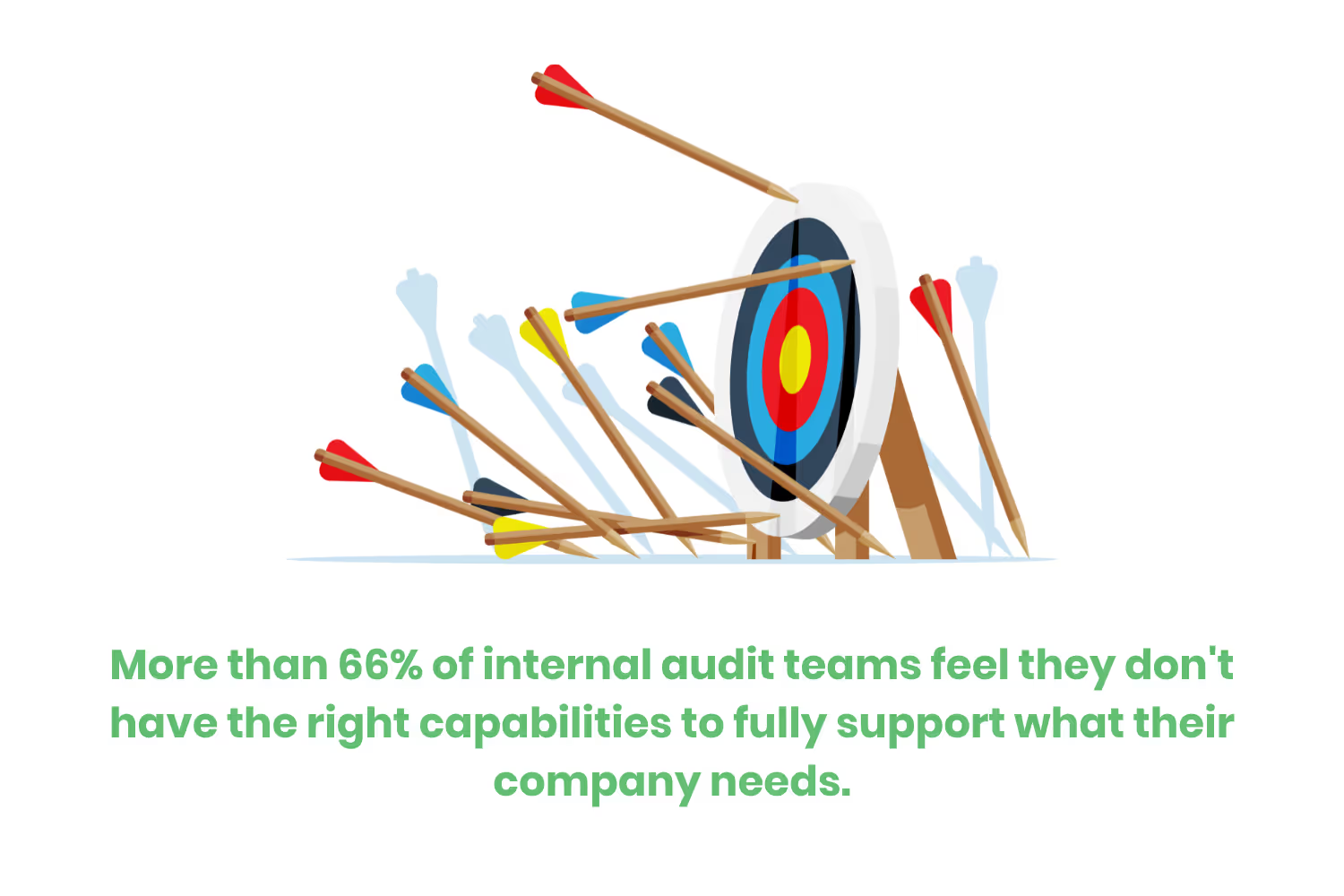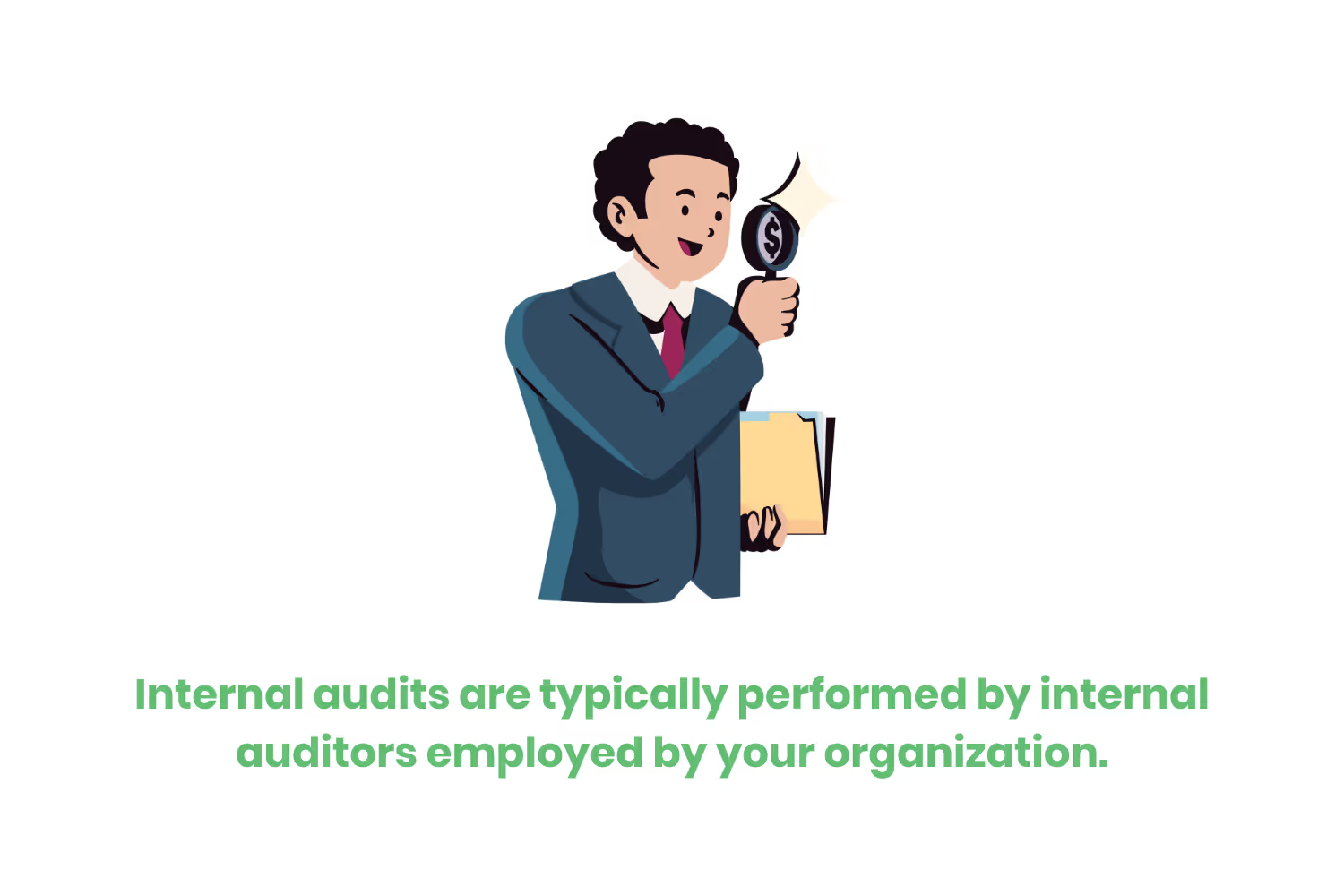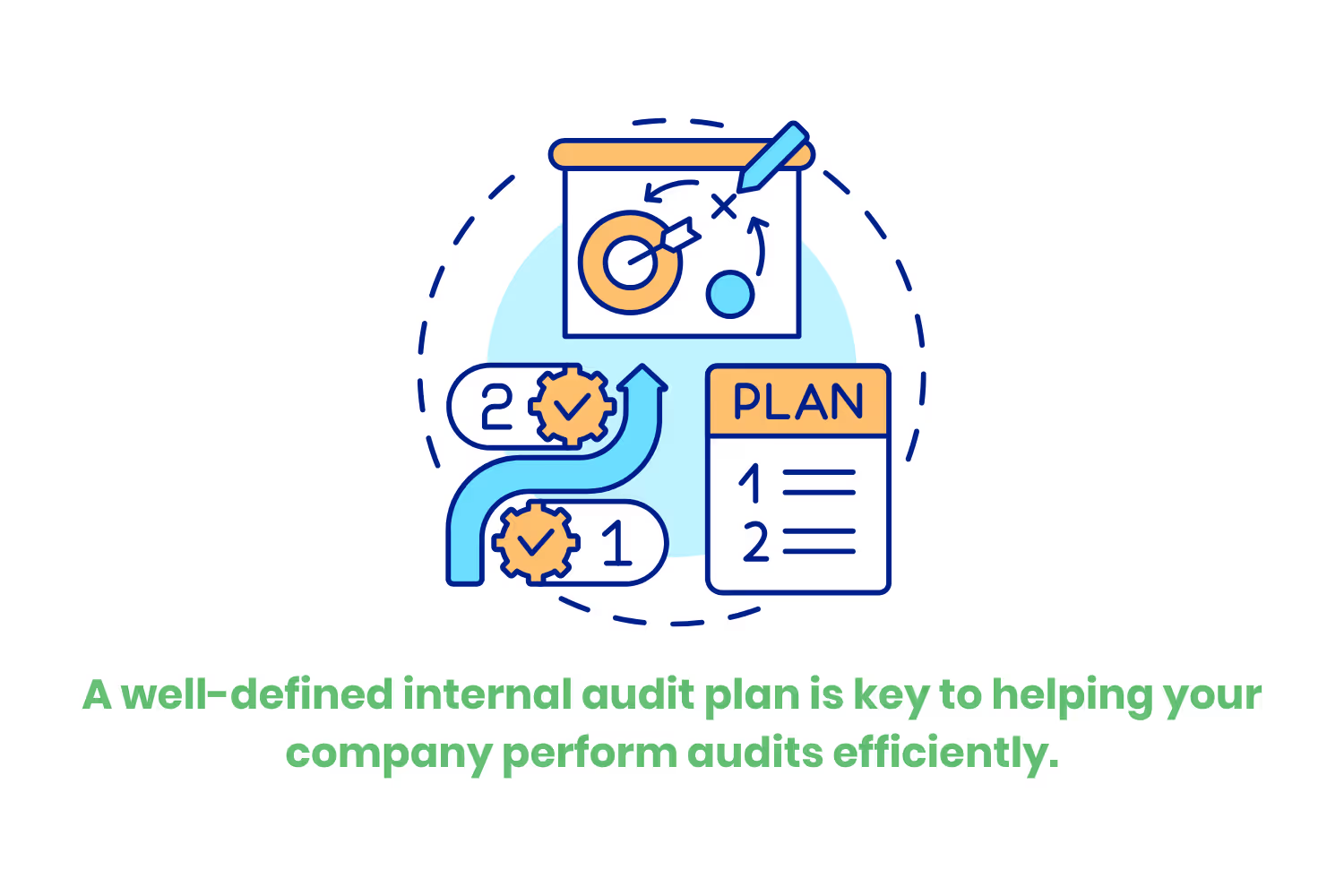How to Create a Comprehensive Step-by-Step Internal Audit Checklist
So let's get into what an internal audit is, the key components of an internal audit checklist, the benefits of having a checklist, and much more!

According to Jefferson Wells’ 2024 Internal Audit Priorities survey, more than 66% of internal audit teams feel they don't have the right capabilities to fully support what their company needs. In simpler terms, many companies simply do not have all of the tools necessary in their toolbox to perform thorough audits and achieve their goals.

So what can internal auditors do to better prepare themselves for a more comprehensive inspection? You have to start building from the ground up. A solid foundation and understanding of best practices and insights can help your team close pesky gaps within your company such as:
- Compliance gaps.
- Financial gaps.
- Operational gaps.
- Risk management gaps.
- Cybersecurity and data protection gaps.
- Strategic alignment gaps.
- Communication and transparency gaps.
So let's get into what an internal audit is, the key components of an internal audit checklist, the benefits of having a checklist, and much more!
What is the internal audit process?
An internal audit is the independent review of the following processes:
- Operations.
- Governance.
- Internal controls.
- Risk management.
The audit involves planning, execution, reporting and follow-up in regard to the above processes in hopes of improving effectiveness and efficiency. An internal audit is vital to your quality management system (QMS) processes. Note that both internal and external audits should align with your organization's policies and procedures.

The Difference Between Internal and External Audits
The key difference between internal and external audits, also known as compliance audits, is who performs the audit. It's kind of in the name.
For instance, internal audits are typically performed by internal auditors employed by your organization. While external audits go through an independent third-party business.
Internal Control Vs External Control
Internal controls are mechanisms, policies, and procedures within a company that teams implement to ensure operational efficiency and regulatory compliance.
While external controls are also mechanisms, policies, and procedures - external entities impose these. This can include regulatory bodies, industry standards organizations, and external auditors.

How to Conduct Internal Audits Effectively
Alright, so now that we know the basics of an internal audit, the question remains: how do I effectively conduct one?
First, a well-defined internal audit plan is key to helping your company perform audits efficiently. There are templates online you can grab from to get started, but don't rely too heavily on these. They don't account for the different nuances of your company specifically.
Effective Internal Audit Templates
If you do want to refer to a template, make sure it includes specific audit criteria, steps, and processes that align with your business objectives. Tailor the template to your needs. Don't base your needs on any single template.

What is an Internal Audit Checklist?
So you found a decent template and have aligned it with your business's specific objectives. You're sure this template along with your own insights will help your business comply with the laws and regulations specific to your industry. Great! Next, it's time to create an internal audit checklist.
These help to ensure you don't miss any steps when reviewing operations. Audit professionals should use a checklist to keep their internal audit procedures organized and systematic.
That way, it is more difficult to have gaps in your process, and if you do you know exactly where to look. This is the best way to evaluate your internal control systems and mitigate risks.
Let's go over some of the key components of your step-by-step internal audit checklist.
Key Components of an Internal Audit Checklist
When creating your checklist, keep in mind that first and foremost you must clearly define any actions you wish to perform beforehand. These audit steps are helpful to refer back to in case you miss something. Evaluate your organization's management system through any necessary processes and controls enforced internally or externally. For example, if you need to stay compliant with ISO or other industry regulations, include this in your checklist.
Include the roles and responsibilities of your audit team while conducting the audit. Ensure transparency in the sharing of information and communication between team members. This helps with audit reports and financial reporting later down the line. Finally, include the audit workflow in the checklist to help you further streamline the processes and procedures. This will help you ensure comprehensive audit results. Here are a few more helpful tips to prioritize creating an efficient checklist:
- Include initial audit planning.
- Involve risk and process subject matter experts.
- Use the correct frameworks for internal audit processes.
- Prepare for a planning meeting with business stakeholders.
- Prepare the audit program.
- Have an audit program and planning review.
Benefits of Using an Internal Audit Checklist
The benefits of using an internal audit checklist are numerous. Not only does it help with ensuring compliance with whatever standards your industry adheres to, but also assists in enhancing customer satisfaction. Through continuous improvement and customer satisfaction surveys, you can collect data to help improve your internal processes and better customize future audits.
Identifying areas for improvement becomes easier when you practice with an internal audit checklist. It helps you pinpoint any weaknesses your company may have in security, compliance, or financial processes.
Using an internal audit checklist also helps with validating controls and processes that currently exist. You want to make sure your existing procedures are effectively implemented. Improving risk management and supporting external auditors are two more benefits to look forward to when you are correctly utilizing a proper checklist.

What are the Common Challenges in Internal Audits?
The challenges when you perform internal audits can be frustrating, but nothing that is impossible to overcome. Some of these complications can serve as opportunities for improvement. Check out the following most common challenges for audit departments.
Addressing Non-Conformance in Audit Reports
Address non-conformance issues and keep them documented in all of your audit-based reports. Develop a plan of action to address these deficiencies as needed to improve your organization's security and compliance. Use non-conformance reports (NCR) to track these issues.
Managing Stakeholder Expectations
Many audit teams may find it challenging to communicate their findings to stakeholders. Turning compiled background information into actionable and urgent information can be confusing. Incorporate clarity and up-to-date information regularly to stakeholders through generating easy-to-read reports.
Insufficient Audit Resources
Internal audit reports can be difficult to manage without the right resources. The more data teams need to analyze, the more time necessary to do so... and the more vulnerable you are to human error. Utilize technology to help streamline your processes and components of internal control. This offers a preventive way for your team to avoid gaps within the company.
Continuous Improvement in Internal Audit Practices
Internal audits provide many benefits from identifying risk and compliance issues to enhancing operational efficiency. As well as supporting strategic decision-making. Whether you are working on internal or external processes, audits are an essential tool. They help you maintain the health and integrity of your business. Internal auditors create and validate controls that prevent inefficiencies, non-compliance, and potential risks before they escalate.
Areas that need improvement are more easily identified with a well-made checklist. Using these to help with your audit planning, internal communication, and manufacturing processes is key. When utilized correctly, different ways to improve your business and other benefits are sure to surface. Helping to reinforce accountability among the team, strengthen business performance, and drive long-term success!
Emphasize your product's unique features or benefits to differentiate it from competitors
In nec dictum adipiscing pharetra enim etiam scelerisque dolor purus ipsum egestas cursus vulputate arcu egestas ut eu sed mollis consectetur mattis pharetra curabitur et maecenas in mattis fames consectetur ipsum quis risus mauris aliquam ornare nisl purus at ipsum nulla accumsan consectetur vestibulum suspendisse aliquam condimentum scelerisque lacinia pellentesque vestibulum condimentum turpis ligula pharetra dictum sapien facilisis sapien at sagittis et cursus congue.
- Pharetra curabitur et maecenas in mattis fames consectetur ipsum quis risus.
- Justo urna nisi auctor consequat consectetur dolor lectus blandit.
- Eget egestas volutpat lacinia vestibulum vitae mattis hendrerit.
- Ornare elit odio tellus orci bibendum dictum id sem congue enim amet diam.
Incorporate statistics or specific numbers to highlight the effectiveness or popularity of your offering
Convallis pellentesque ullamcorper sapien sed tristique fermentum proin amet quam tincidunt feugiat vitae neque quisque odio ut pellentesque ac mauris eget lectus. Pretium arcu turpis lacus sapien sit at eu sapien duis magna nunc nibh nam non ut nibh ultrices ultrices elementum egestas enim nisl sed cursus pellentesque sit dignissim enim euismod sit et convallis sed pelis viverra quam at nisl sit pharetra enim nisl nec vestibulum posuere in volutpat sed blandit neque risus.

Use time-sensitive language to encourage immediate action, such as "Limited Time Offer
Feugiat vitae neque quisque odio ut pellentesque ac mauris eget lectus. Pretium arcu turpis lacus sapien sit at eu sapien duis magna nunc nibh nam non ut nibh ultrices ultrices elementum egestas enim nisl sed cursus pellentesque sit dignissim enim euismod sit et convallis sed pelis viverra quam at nisl sit pharetra enim nisl nec vestibulum posuere in volutpat sed blandit neque risus.
- Pharetra curabitur et maecenas in mattis fames consectetur ipsum quis risus.
- Justo urna nisi auctor consequat consectetur dolor lectus blandit.
- Eget egestas volutpat lacinia vestibulum vitae mattis hendrerit.
- Ornare elit odio tellus orci bibendum dictum id sem congue enim amet diam.
Address customer pain points directly by showing how your product solves their problems
Feugiat vitae neque quisque odio ut pellentesque ac mauris eget lectus. Pretium arcu turpis lacus sapien sit at eu sapien duis magna nunc nibh nam non ut nibh ultrices ultrices elementum egestas enim nisl sed cursus pellentesque sit dignissim enim euismod sit et convallis sed pelis viverra quam at nisl sit pharetra enim nisl nec vestibulum posuere in volutpat sed blandit neque risus.
Vel etiam vel amet aenean eget in habitasse nunc duis tellus sem turpis risus aliquam ac volutpat tellus eu faucibus ullamcorper.
Tailor titles to your ideal customer segment using phrases like "Designed for Busy Professionals
Sed pretium id nibh id sit felis vitae volutpat volutpat adipiscing at sodales neque lectus mi phasellus commodo at elit suspendisse ornare faucibus lectus purus viverra in nec aliquet commodo et sed sed nisi tempor mi pellentesque arcu viverra pretium duis enim vulputate dignissim etiam ultrices vitae neque urna proin nibh diam turpis augue lacus.




